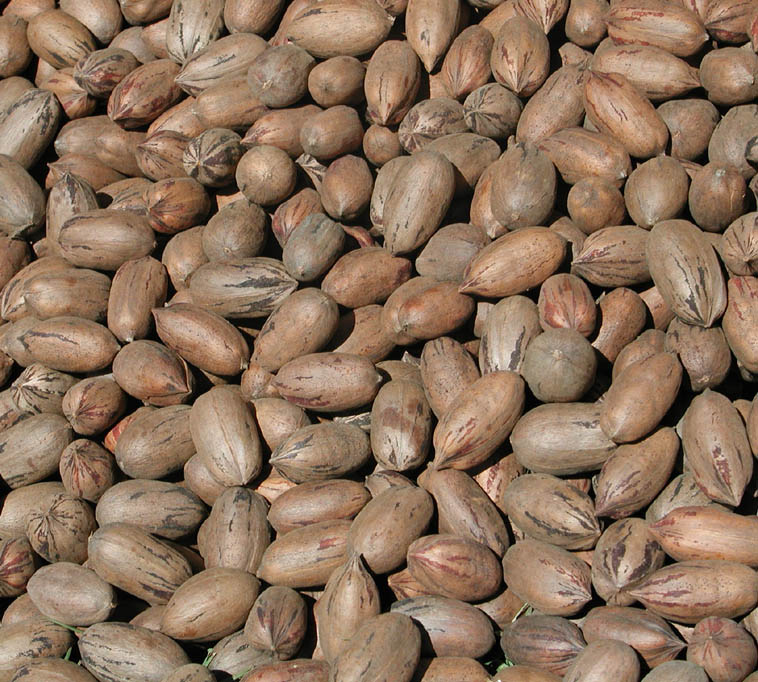
Weather-related crop damage helps push pecan prices to near record high
“Despite the health benefits of pecans, there’s an upper limit to what consumers will pay for them. As a grower, I’d love to get $3 a pound for my pecans every year. But, I also understand that we’re competing against other nuts.”
February 2, 2016

“It’s like nothing I’ve seen in my 31years as a grower and buyer of pecans,” says Phil Arnold, Las Cruces, N.M.
He’s referring to the 2015 North American pecan crop, which is likely to fall about 90 million pounds short of what had been expected - a 550-million pound crop. Blame a series of widespread adverse weather and the impact of disease.
In Georgia, for example, an October hurricane contributed to the deterioration of a crop that earlier showed promise of totaling between 120 to 130 million pounds (in-shell). Also, warm, weather also caused problems, severely reducing quality and caused rotting kernels in some areas of the state.
In Louisiana, Oklahoma and Texas, the 2015 crop also failed to meet earlier projections when wet weather in May lowered pollination rates. The quality of the West Texas crop also suffered significantly from hail storms in October.
“This kind of damage when the crop was pretty much in its final stages was a shock,” says Arnold, who also serves as president of the New Mexico Pecan Growers Association.
Then, in September, trees in the Hermosillo, Mexico area stood in a foot of water for a week or more after a hurricane drenched orchards with about 12 inches of rain over four days, just as the harvest was getting underway.
Arnold says, “Growers couldn’t get their crop out of the fields before extreme heat and humidity caused nuts to begin sprouting on the tree, discounting their market value,” Arnold says.
New Mexico growers, on the other hand, were spared any major threats to their 2015 pecan crop, he notes. The harvest, which started a little later than usual, began in the Pecos Valley around the first of December.
Mesilla Valley growers began shaking their trees about a week later. More than two-thirds of the state’s crop had been harvested by Christmas, when as much as a foot of snow halted fieldwork in the Mesilla Valley for about a week.
Meanwhile, the harvest north of there in New Mexico’s Hatch Valley and west into Arizona was not affected by snow. Arnold expects growers to wrap up the harvest of their 2015 crop around the first of February.
“The quality of the New Mexico crop, in general, has been pretty good, but not superior,” he adds.
Meat yields have been about normal, averaging around 56.5 percent. Growers have reported fewer stick-tights than usual, Arnold notes. He attributes part of the reduction to improved pruning practices. But, much of the credit goes to rain in September and October which encouraged hulls to open, he says.
Meanwhile, growers have been watching in-shell prices for their smaller crop rise to the near record $3.00 per pound levels of 2010 and 2011 as consumer appetite for pecan remains strong.
Brisk sales of 2014 crop pecans, which Arnold attributes to prices competitive with almonds and walnuts, left processors with very low inventories going into the 2015 harvest. This has added to upward pressure on pecan prices, he notes.
“In New Mexico, the amount of contracts offered growers while the 2015 crop was still on the trees was abnormally high,” says Arnold. “By mid-January of this year, less than 10 million pounds of the estimated 120 million pounds produced in the western U.S. remained uncommitted.”
At the start of New Mexico’s harvest, growers were offered about $2.20 to $2.30 per pound for their pecans. By mid-December, prices had risen anywhere from another 10 to 20 cents a pound and, by the second week of January as high as $3 or more per pound.
Arnold says, “In fact, some processors lost money, because they had to pay higher-than-expected prices to satisfy some of the large contracts they signed with buyers a year in advance.”
He sees the potential for pecan prices to moderate some into next year, perhaps, to around $2.50 per pound, depending on the size of the 2016 crop. Such an outcome could serve the growers’ best long-term interests, he notes.
For the latest on western agriculture, please check out Western Farm Press Daily and receive the latest news right to your inbox.
“Despite the health benefits of pecans, there’s an upper limit to what consumers will pay for them,” he says. “As a grower, I’d love to get $3 a pound for my pecans every year. But, I also understand that we’re competing against other nuts.
When western growers sold pecans for around $3 a pound in 2010 and 2011, this translated into prices in the $8- to $12- per- pound range at the supermarket. As a result, consumers stopped buying pecans and prices fell.
Arnold says, “By the time the 2012 pecan crop was harvested, in-shell prices had plummeted by about 40 percent. This shows how abnormally high prices can bite growers back.”
You May Also Like



